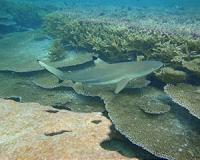 |
Madrid, Spain (SPX) Mar 08, 2011 There are already systems that detect ships at sea, but a group of engineers from the UAH, led by the researcher Raul Vicen, has introduced a new development, involving "the use of artificial intelligence techniques and improvements in the templates used to select input data". The team has come up with a new detection method "that outperforms the one that has generally been used until now, as well as offering the advantages of low computational costs, and which can also be used in real time". The new system, the details of which are published in the journal IET Radar, Sonar and Navigation, involves firstly gathering information from radar data using a series of templates designed by the scientists. This phase makes use of regular radar tracking data (both horizontal and vertical), as well as other more advanced modes (diagonal). An artificial neural network architecture called a "multilayer perceptron" that is capable of learning from its environment, is then used. This makes it possible to differentiate between ships and waves in the confused radar images seen during storms. Test passed in the North Sea The technique has been successfully trialled using data from an X-band sea radar system (the most common in these kinds of devices, with frequencies of between 7 and 12.5 gigahertz), located on the German FINO-1 research platform in the North Sea. "The fact that we obtained results with real data shows that this method can be installed in ship and ocean platform radar systems, without any problem", the authors explain. According to the study, this system offers "substantial" improvements in comparison with the conventional systems used for detecting ships, such as the CA-CFAR technique (Cell Averaging-Constant False Alarm Rate). Radar systems usually use these algorithms to detect targets among the waves, or 'sea clutter', but the proposed system "outperforms the current systems in terms of its detection rates". References: R. Vicen-Bueno R., Carrasco-Alvarez M.P., Jarabo-Amores J.C., Nieto-Borge y M. Rosa-Zurera. "Ship detection by different data selection templates and multilayer perceptrons from incoherent maritime radar data". IET Radar, Sonar and Navigation 5(2): 144-154, February 2011. DOI: 10.1049/iet-rsn.2010.0001.
Share This Article With Planet Earth
Related Links FECYT - Spanish Foundation for Science and Technology GPS Applications, Technology and Suppliers
 Shark Tracking Reveals Impressive Feats Of Navigation
Shark Tracking Reveals Impressive Feats Of NavigationLondon UK (SPX) Mar 04, 2011 Some shark species are able to navigate to specific locations up to 50km away, a new study published in the British Ecological Society's Journal of Animal Ecology has found. Re-analysing tracking data from tagged sharks, ecologists found that while some species such as blacktip reef sharks swim in a pattern known as a "random walk", others such as tiger sharks can at times hunt for prey or mates ... read more |
|
| The content herein, unless otherwise known to be public domain, are Copyright 1995-2010 - SpaceDaily. AFP and UPI Wire Stories are copyright Agence France-Presse and United Press International. ESA Portal Reports are copyright European Space Agency. All NASA sourced material is public domain. Additional copyrights may apply in whole or part to other bona fide parties. Advertising does not imply endorsement,agreement or approval of any opinions, statements or information provided by SpaceDaily on any Web page published or hosted by SpaceDaily. Privacy Statement |